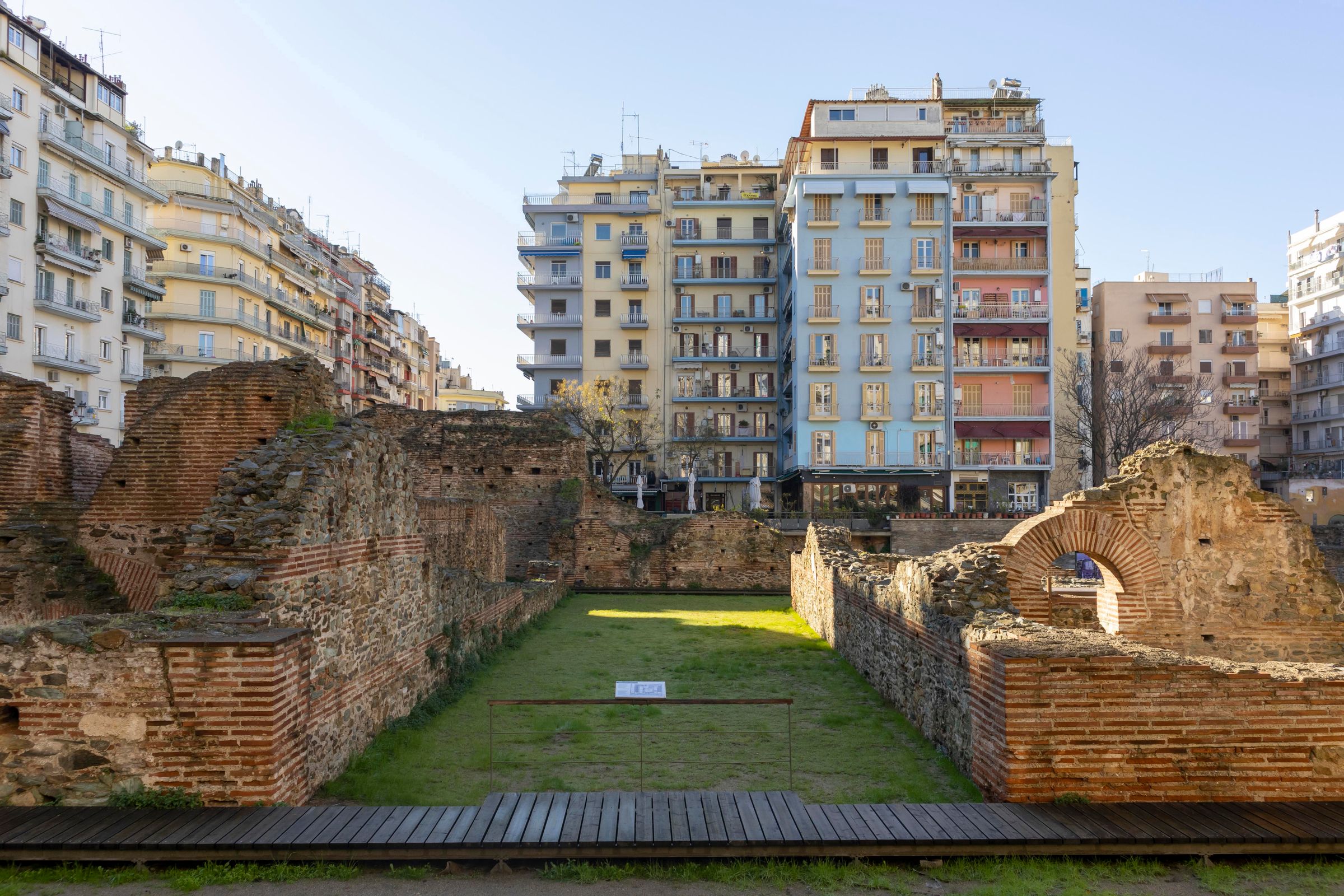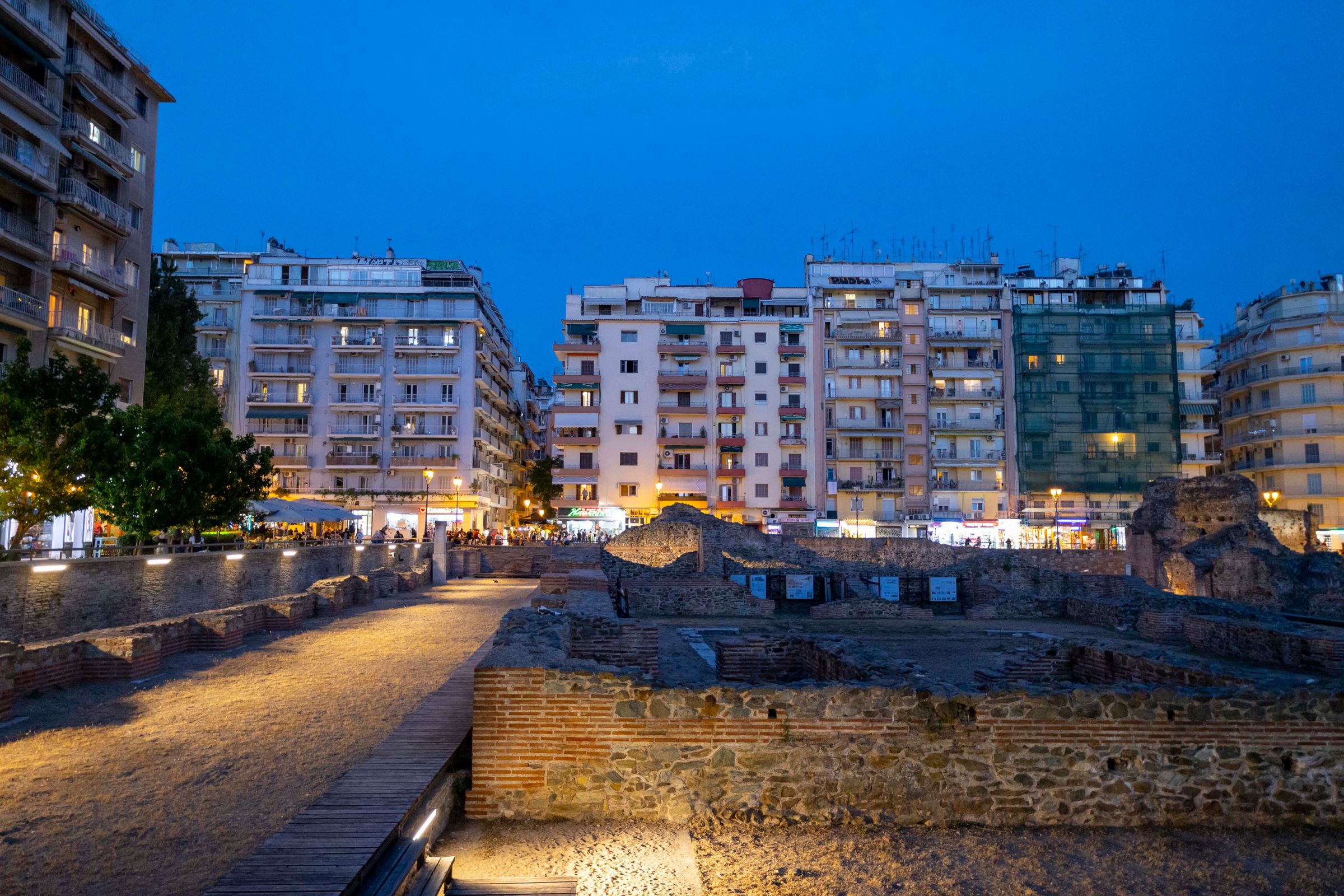
Galerius Palace
Galerius Palace
The monument of Roman Thessaloniki
With its installation in Thessaloniki in 299 AD. after his successful campaign against the Persians, Caesar Galerius, one of the four commanders of the Roman Empire, began his residential campaign that would change the appearance of the city center. The "Palace of Galerius", a total area of 150,000 sq.m. which stretched from the sea to the Rotonda and from Navarinou Square to today's Agia Sophia, is the most characteristic example of the prosperity of Thessaloniki during the Roman years.
Parts of the Galerian Complex were the Arch, the Octagon, the Hippodrome, and the Rotonda, at the height of today's Mitropoleos Street was the private port of Caesar, while the main Palace, the imposing construction, part of which is still preserved today covered today's Navarinou Square.
The Palace of Galerius functions as an open museum and visitors walk around it as it is in the middle of the square. The remains of the building, brought to light by the archeological excavation at the beginning of the 20th century, form the basis of the original, two-story building, which had been destroyed by earthquakes in the past. The structure of the building complex with the rooms, the corridors, the mosaics, and the frescoes that have been saved is presented for visitors, in one of the most characteristic parts of the city that embraced the space and incorporated it into its daily life, as Navarinou Square hosts many visitors, passers-by, workers, tourists, all day long, combining the modern rhythms of the shops and apartment buildings that surround it with the aura of the 4th century BC. which extends as far as one can see.






